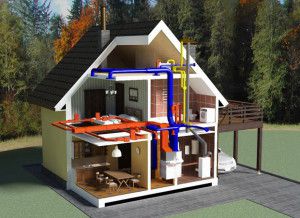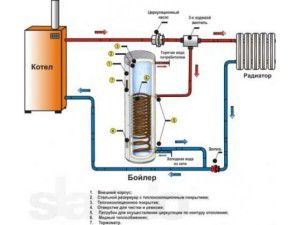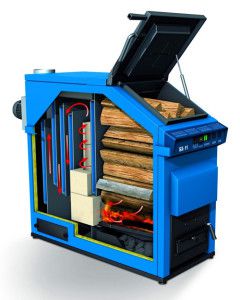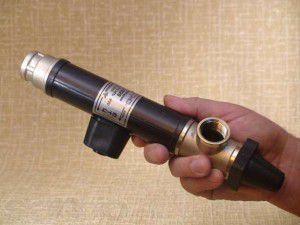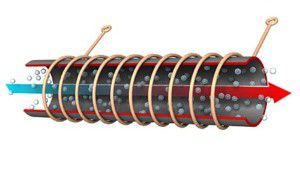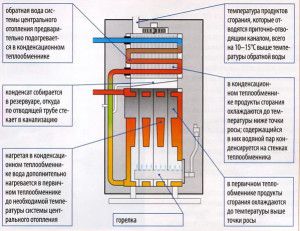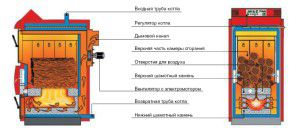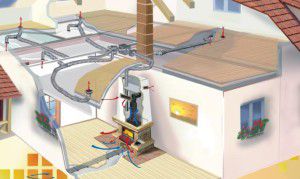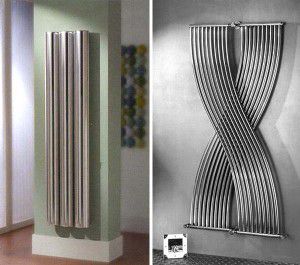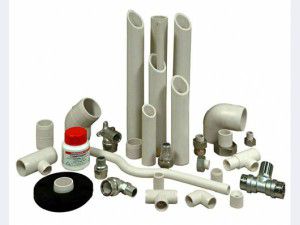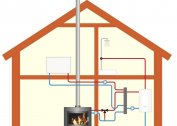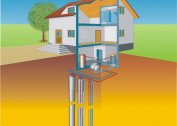How to improve the performance of the heating system and make its maintenance more comfortable for the owner of a private house. To solve this problem, it is necessary to know new trends and developments in the field of heat supply. All modern heating systems of a private house should be not only convenient, but also have optimal performance characteristics.
Requirements for modern home heating
The purpose of any heat supply is to maintain a comfortable temperature level in the room. However, in addition to this, modern heating of a private house must meet a number of additional requirements.
First of all, this is the maximum safety for those living in the house. Those. no heat supply element or its operation should harm a person. This is especially true for relatively new polymeric materials of manufacture. Also, when choosing a system, the following factors should be considered:
- Economic expediency. It is important that the amount of received thermal energy strive for a similar indicator of consumed. Modern heating of a private house should have an efficiency close to 100%;
- Minimum maintenance resources. Traditional heating schemes have several significant drawbacks - a large amount of soot (solid fuel boilers and furnaces), the need for annual pipe cleaning, constant monitoring of the fuel volume and operation mode. Modern types of heating a private house almost completely eliminate the influence of these factors on the work;
- Maximum battery life.
What needs to be done to fulfill these conditions as much as possible? To do this, it is recommended to study the proposals on the market of heating appliances and circuits, choosing the optimal assembly for a particular house.
In most cases, it is more economical to upgrade an existing system than to make a completely new one.
Ways to improve heating performance
Not always modern heating boilers or pipes made of new materials are the only factors for improving the system parameters. First, experts recommend a comprehensive analysis of external and internal factors affecting the characteristics of heat supply.
The decisive one is the reduction of heat losses of the building. They directly affect the optimal power that modern heating should have without electricity or a traditional type. However, this should take into account the norms of ventilation - the air exchange in each room must comply with the standards. Modern methods of heating a private house should not impair the comfort of living.
Methods of optimizing the operation of the heating system can be divided into several types - installation of boilers with a high coefficient of efficiency, installation of pipes with reduced heat transfer and the use of batteries with a good heat transfer coefficient.
First you need to calculate the feasibility of installing a particular heating element. It is important that his work actually improves the work of heating.
Modernization of the heating system
To increase the current system parameters, you can change a number of its components. Such an improvement will be carried out only after calculating the current characteristics and identifying "weak" spots in the heating circuit.
The easiest way is to install an indirect heating tank (heat accumulator).Modern electric heating in combination with a multi-tariff meter will make it possible to reduce energy costs. It is important to calculate tank volume correctly.
You can also make more global changes to the schema:
- Installation of manifold piping. It is relevant for houses with a large area;
- Replacement of steel pipes with polymer pipes of a smaller diameter. This will make it possible to reduce the total volume of the coolant, which will entail savings in its heating;
- Installation of monitoring devices - programmers, temperature controllers, etc. These modern heating devices are designed to monitor the current parameters of the system and change the mode of its operation depending on the settings.
The installation of a new heating boiler will also significantly improve the performance. Modern gas models consume an order of magnitude less energy and have built-in control devices and safety groups. Often, modern methods of heating a country house include the installation of long-burning pyrolysis boilers operating on fuel pellets or briquettes.
It is necessary to check in advance whether new heating elements can be mounted with old ones. For example, in open heating, installation of small diameter polypropylene pipes is not possible. They will not be able to provide natural circulation without installing a pump.
Alternative home heating
The composition of modern heating of a private house should include new methods for generating thermal energy. Unlike standard ones, they have low power consumption, but at the same time they are characterized by a small amount of heat generated.
As a source of thermal energy, you can use solar radiation or soil heating of the coolant. It all depends on climatic conditions, land area and financial capabilities:
- Geothermal heating. It works on the principle of temperature difference between different layers of soil. To organize the system will require large costs and special equipment - a heat pump;
- solar collector. This is a type of modern heating without electricity. Directly depends on the intensity of solar radiated in a particular region. In summer, it can be used as hot water.
Often these systems are installed as auxiliary systems to reduce heating costs. Each of them requires a detailed miscalculation to determine the feasibility of the acquisition and installation. So, a complex geothermal installation for a house with an area of 150 m² will cost about 700 thousand rubles.
To complete the alternative systems, it is recommended to use modern pipes for heating from polymers. They have increased thermal insulation and are easy to install.
Boilers
The central unit of any classic heating circuit is a boiler. The heat supply parameters largely depend on its functionality. So, modern electric boilers for heating a house can take up little space and at the same time generate the optimal amount of thermal energy.
Quite stringent requirements are imposed on heating equipment of this type. It should be as safe as possible in operation, technical specifications should comply with existing standards, and the controls should have a clear and intuitive interface.
Electric heating boilers
Installation of electric heating devices is relevant if the area of the room is relatively small or there is no main gas supply. In practice, for the organization of modern electric heating, it is possible to use not only boilers of a classical design with a heating element, but also new models that have a different operating principle.
The principle of operation of the electrode boiler is to create the movement of the electrodes in a pair of cathode-anode.This leads to heating of the water and an increase in pressure. As a result, circulation of the coolant occurs. In addition to the heating zone, modern electrode-type heating boilers have a control unit, and it is also possible to connect to the programmer.
To get more heat, you can install an induction boiler. It works according to the principle of electromagnetic induction that occurs between the core and the winding. To ensure safety, the coil and core are completely isolated from contact with water.
These modern types of electric heating of a private house have several features. The main one is low inertia - water heating occurs very quickly. However, in addition to this, the following operating features should be considered:
- Current heating costs. Heating the coolant with the help of electrical appliances is considered the most costly;
- Purchase and installation of additional elements - expansion tank, circulation pump, safety group;
- Electrode boilers have special heat carrier requirements. It should contain a relatively large amount of salts to support the electrolysis reaction.
But despite these factors, electric heating is widely used in buildings with no gas mains. Another advantage is the ability to organize separate air heating circuits in each room.
During the installation of electric boilers, it is necessary to install an RCD. A separate electrical wiring line is also recommended.
Gas condensing heating boilers
One of the modern ways of heating a private house is the installation of gas condensing boilers. Outwardly, they are practically no different from traditional ones. The difference is an additional internal heat exchanger.
The essence of the innovative addition is the use of thermal energy of combustion products. The relative complex network of the internal chimney reduces the temperature of carbon monoxide until it forms a dew point on an additional heat exchanger. It is connected to the return heating pipe. As a result, the water in it is heated due to exposure to hot condensate.
According to the manufacturer, this modern heating device can have an efficiency higher than 100%. In practice, it reaches 99%, which is a record for heating cats. But for the right choice of a particular model, the following factors should be considered:
- The resulting condensate must not be drained into the sewer system. It should be stored in a sealed container;
- For each boiler model of this type, there is a recommended temperature mode of operation, in which condensation forms on the surface of the secondary heat exchanger;
- The high cost of equipment.
Since this modern method of heating a private house provides for a low-temperature mode of operation, it is recommended to increase the area of radiators and batteries. This entails additional costs for the acquisition of system components.
In low-temperature gas boilers, plastic chimneys can be used, since the degree of heating of carbon monoxide will be low - up to + 60 ° С.
Solid fuel boilers long burning
Alternative modern stove heating of a private house are long-burning boilers. Unlike traditional models, heating of the coolant does not occur due to combustion of fuel, but as a result of ignition of wood or coal gases.
To do this, restrict the flow of air into the combustion chamber, which entails the decay of solid fuel. The gases emitted through the channels enter the afterburning zone, where oxygen is injected using a fan or turbine. As a result, the gas mixture ignites, releasing a large amount of thermal energy.
The advantages of this modern method of heating a private house are:
- Economical fuel consumption;
- Long time working on a single load of firewood or coal;
- The ability to adjust the degree of heating of the coolant using the intensity of the fan.
One of the disadvantages of this modern heating without electricity is the low temperature of carbon monoxide. This leads to condensation on the chimney. Therefore, all long-burning boilers must be equipped with a thermally insulated chimney system.
The cost of all the heating boilers discussed above differs depending on the manufacturer and specific power.
| Name | A type | power, kWt | Cost, rub. |
| Stropuva | Long burning | 20 | 82890 |
| Baxi LUNA 3 | Condensation | 24 | 75800 |
| Vin | Induction | 3 | 17250 |
| Galan | Electrode | 9 | 9125 |
A feature of the operation of long-burning boilers is a large amount of soot in the combustion chamber and on the heat exchanger. Therefore, they need to be cleaned more often than classic models.
House heating without electricity
But what if the installation of modern electric boilers for heating a house is not practical, and there is no gas main in the house? Alternatively, a stove or fireplace heating system can be improved. For this, it is necessary to install a system of air channels connected to the heat exchanger of the furnace.
Modern stove or fireplace heating of a private house with additional air channels uses all the energy from the combustion of fuel. For proper organization, you need to think through a piping system. Most often they are located at the top, hidden by a decorative ceiling. To control the power of the hot air inlet, deflectors must be installed in each room.
In addition, you should know the features of the configuration, peculiar only to this modern method of heating a country cottage:
- For normal ventilation, install an outdoor air intake duct. To prevent dust from entering the system, filters are mounted;
- Improve the circulation of flows using fans or turbines. They are also part of the modern electric heating of the house, if you additionally install electric heating elements;
- Mandatory tightness of the heat exchanger. In no case should carbon monoxide enter the air ducts.
If we analyze the cost of arrangement, then the stove or fireplace types of heating of a private house will be much more expensive than traditional methods of heating the air. However, the simplest scheme may include only air ducts without a filtration system and forced circulation of hot air currents.
If the heating system does not have a channel for air intake from the street - ventilation should be provided in the house. It can be forced or natural.
Radiators and heating pipes
In addition to modern heating boilers, pipes and radiators are no less important components. They are necessary for the efficient transfer of thermal energy to indoor air. During the design of the system, it is necessary to solve two problems - to reduce heat loss during transportation of the coolant through pipes and to improve the heat transfer of the batteries.
Any modern heating radiators should not only have good heat transfer performance, but also a design convenient for repair and maintenance. The same applies to pipelines. Their installation should not cause difficulties. Ideally, the installation can be carried out by the owner of the house without the use of expensive equipment.
Modern heating radiators
To increase heat transfer, aluminum is increasingly used as the main material for the manufacture of batteries.It has good thermal conductivity, and casting or welding technology can be used to obtain the desired shape.
But keep in mind that aluminum is very sensitive to water. Modern cast-iron heating radiators do not have this drawback, although they have less energy consumption. To solve this problem, a new battery design was developed in which the water channels are made of steel or copper pipes.
These modern pipes for heating practically do not corrode, having a minimum size and wall thickness. The latter is necessary for the efficient heat transfer of aluminum energy from hot water. Modern heating radiators have several advantages, which are as follows:
- Long service life - up to 40 years. However, it depends on the working conditions and timely cleaning of the system;
- The ability to select a connection method - top, bottom or side;
- The package may include a Mayevsky crane and a temperature controller.
In most cases, models of modern cast-iron heating radiators are made designer. They have classic shapes, some of them are made in the floor version with elements of artistic forging.
The efficiency of the heating radiator depends on the correct installation and connection method. This must be taken into account when installing the system.
Modern heating pipes
The choice of modern heating pipes largely depends on the material of their manufacture. Currently, most often use polymer lines made of polypropylene or cross-linked polyethylene. They have an additional reinforcing layer of aluminum foil or fiberglass.
However, they have one significant drawback - a relatively low temperature exposure threshold of up to + 90 ° C. This entails a large thermal expansion and, as a consequence, damage to the pipeline. An alternative to polymer pipes can be products from other materials:
- Copper. In terms of functionality, copper piping meets all the requirements for a heating system. They are easy to install, practically do not change their shape even at extremely high coolant temperatures. Even when water freezes, the walls of the copper pipes will expand without damage. The disadvantage is the high cost;
- Stainless steel. It does not rust, its inner surface has a minimum roughness coefficient. The disadvantages include the cost and time-consuming installation.
How to choose the best equipment for modern heating? To do this, you need to use an integrated approach - to make the correct calculation of the system and according to the received data to choose a boiler, pipes and radiators with the corresponding operational characteristics.
The video shows an example of modern home heating using a floor heating system:
